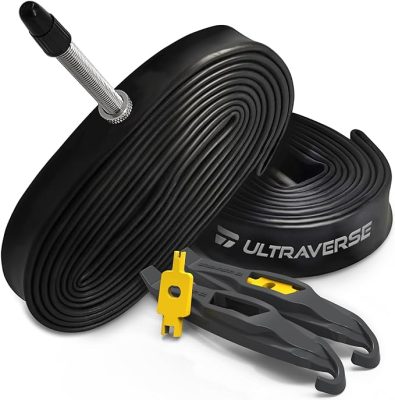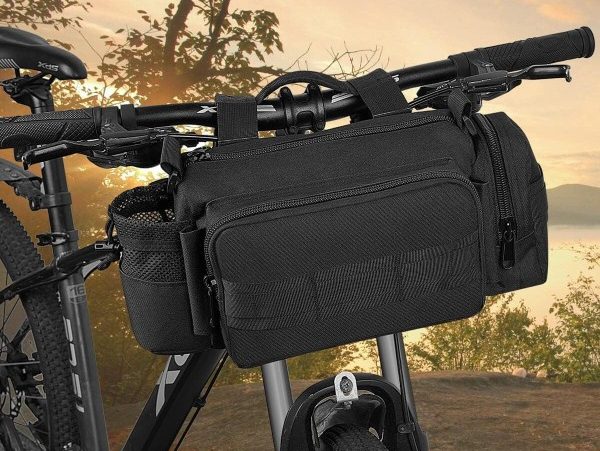Imagine effortlessly gliding through your cycling route, every pedal stroke perfectly synchronized with your body’s rhythm. 2025 brings a new wave of bike cadence sensors designed to elevate your biking experience to unprecedented levels.
These advanced sensors not only track your cadence but also provide invaluable data to fine-tune your performance. Stay tuned to discover which bike cadence sensor will redefine your cycling journey and help you reach new heights in your biking endeavors.
Best bike cadence sensors of 2025
5. Magene Outdoor/Indoor Speed/Cadence Sensor for Cycling
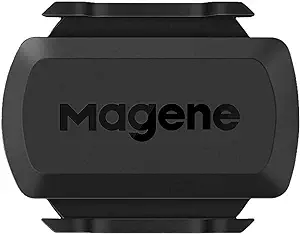
For cyclists seeking a reliable and versatile cadence sensor, the Magene Outdoor/Indoor Speed/Cadence Sensor stands out as an excellent choice due to its seamless compatibility with popular cycling apps and devices like Onelap, Wahoo Fitness, Zwift, and Strava. This wireless Bluetooth/Ant+ bike computer RPM sensor offers easy setup and performance benefits, with positive feedback on its use with Garmin watches and Edge 830.
While some initial connection and accuracy issues have been reported, many users find it to be a suitable replacement for Garmin sensors, especially appreciating its compatibility with the Kinetic Fit app and Bluetooth connectivity. Installation, battery, and compatibility with trainers like Zwift and Saris Fluid 2 have been noted, highlighting its functionality and performance in various cycling setups.
4. iGPSPORT Speed/Cadence Sensor
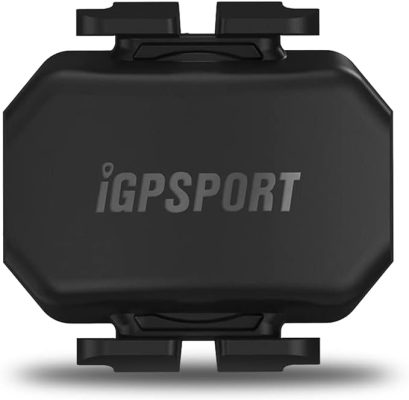
Ideal for enthusiasts seeking comprehensive data accuracy, the iGPSPORT Speed/Cadence Sensor stands out with its dual Bluetooth 5.0 & ANT+ technology and precise independent algorithms. This sensor, compatible with various devices like bike computers and smartwatches, ensures accurate data collection for speed and cadence measurements.
The easy installation process using a rubber band fixing method makes it convenient for users. With an IPX7 waterproof rating, the sensor can withstand various weather conditions, while its long battery life of up to 300 hours ensures uninterrupted usage. The iGPSPORT Speed/Cadence Sensor, with its commitment to accuracy and reliability, is a valuable addition to any cyclist’s gear, offering a seamless experience for tracking performance metrics.
3. Bryton Smart Cadence & Speed Sensor
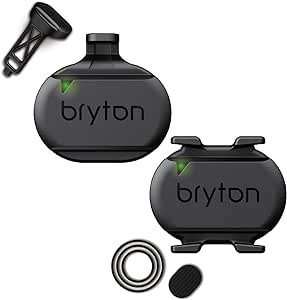
Featuring a magnet-less design and dual technology compatibility with ANT+ and Bluetooth, the Bryton Smart Cadence & Speed Sensor stands out as a versatile choice for cyclists seeking reliable performance and seamless connectivity across various devices. With an easy installation process and the ability to move between bikes effortlessly, this sensor offers convenience for users. Compatible with most devices, it ensures a wide range of connectivity options. Customer reviews highlight the sensor’s accurate readings without the need for magnets, making it a practical choice for many cyclists.
While some users initially faced sporadic readings, Bryton resolved these issues with a software update, demonstrating their commitment to improving user experience. The Bryton Smart Cadence & Speed Sensor provides a valuable addition to any cyclist’s gear setup.
2. Wahoo RPM Cycling Speed Sensor
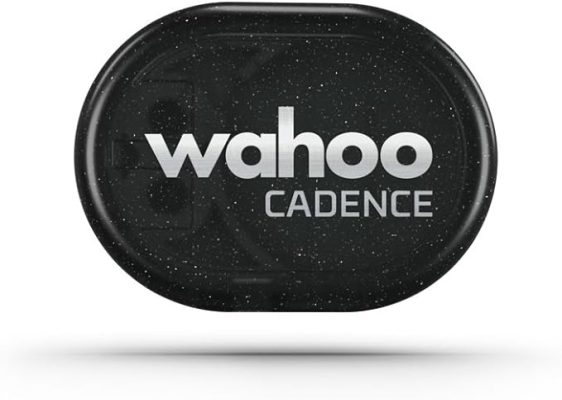
The Wahoo RPM Cycling Speed Sensor stands out as the top choice among bike cadence sensors due to its dual-band technology and seamless compatibility with training apps, making it a versatile tool for cyclists across various terrains. With its use of both ANT+ and Bluetooth Smart capabilities, this sensor ensures reliable data transmission to your preferred devices.
The sensor’s easy installation without magnets simplifies the setup process, allowing you to focus on your ride. Additionally, the waterproof design with an IPX7 rating ensures durability in various weather conditions. When considering a cadence sensor for your cycling needs, the Wahoo RPM Cycling Speed Sensor’s combination of technical specifications, user-friendly features, and trusted brand reputation makes it a compelling choice for enhancing your cycling performance.
1. Garmin Speed Sensor 2 and Cadence Sensor
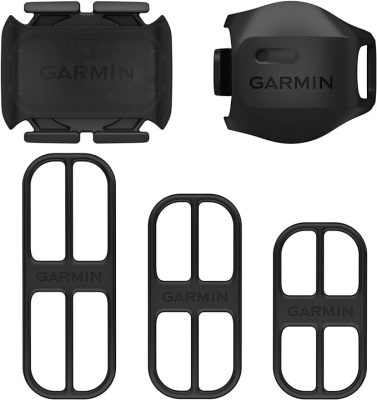
Enhancing your cycling performance with precise speed and cadence data, the Garmin Speed Sensor 2 and Cadence Sensor prove to be indispensable tools for dedicated cyclists in 2025. The Speed Sensor 2, which attaches to the wheel hub, provides accurate speed and distance measurements, while the Cadence Sensor 2 tracks pedal strokes per minute for optimal training insights. These wireless sensors, weighing only 20 grams each, offer easy installation and Bluetooth connectivity, making them compatible with various Garmin devices.
Users commend the seamless integration with Garmin watches and bike computers, highlighting the sensors’ accuracy in monitoring cycling metrics. With positive user feedback emphasizing the ease of use and reliable data monitoring, the Garmin Speed Sensor 2 and Cadence Sensor are highly recommended for cyclists seeking to elevate their training routines.
What to consider when choosing the best bike cadence sensors

Compatibility with bike computer or smartphone app
Considering the compatibility with a bike computer or smartphone app is crucial when selecting the optimal bike cadence sensors. Ensure that the sensor you choose seamlessly pairs with your preferred device to track and analyze your cadence data accurately.
Look for sensors that support Bluetooth and ANT+ connectivity protocols for broader compatibility with various devices. Check if the sensor is compatible with popular cycling apps like Strava, Zwift, or Garmin Connect to easily sync your cadence information for performance analysis.
Prioritize sensors that offer real-time data transmission to your device for immediate feedback during rides. Opting for a sensor that integrates smoothly with your existing technology ecosystem can enhance your overall cycling experience and training efficiency.
Mounting options and ease of installation
For optimal selection of bike cadence sensors, it’s essential to prioritize mounting options and ease of installation. When choosing a cadence sensor, consider whether it attaches to the crank arm, pedal spindle, or shoe.
Crank arm-mounted sensors are typically easier to install but may require specific compatibility with the crankset. Pedal spindle sensors offer a simple installation process but may limit pedal choices. Shoe-mounted sensors provide versatility but may require additional accessories.
Look for sensors that come with clear instructions and compatible mounting hardware to ensure a hassle-free setup. Easy installation not only saves time but also reduces the risk of improper sensor placement affecting data accuracy.
Battery life and type
To optimize your selection of bike cadence sensors, the consideration shifts to the crucial aspect of battery life and type. When choosing a cadence sensor, it’s essential to look for a model with a long-lasting battery to minimize the need for frequent replacements.
The type of battery used in the sensor can impact its longevity and performance. Opt for sensors with easily replaceable coin cell batteries for convenience. Lithium batteries are preferred for their extended lifespan and reliable power output.
Ensuring your cadence sensor has a dependable battery type will help maintain consistent data tracking during your rides, allowing you to focus on improving your cycling performance without interruptions.
Connectivity options
When selecting the best bike cadence sensors, prioritize evaluating the connectivity options available to ensure seamless integration with your cycling technology. Look for sensors that offer Bluetooth and ANT+ connectivity for compatibility with a wide range of devices such as smartphones, GPS units, and bike computers.
This dual connectivity feature allows you to pair the cadence sensor with multiple devices simultaneously, providing flexibility in tracking and analyzing your cycling data. Additionally, consider sensors that support both real-time data transmission and the ability to store data for later analysis.
Ensuring that your cadence sensor can easily sync with your preferred cycling apps or devices will enhance your overall cycling experience and training efficiency.
Frequently Asked Questions
Can Bike Cadence Sensors Be Used on Any Type of Bike, or Are They Specific to Certain Models or Brands?
You can use bike cadence sensors on any type of bike, not specific to certain models or brands. These sensors universally track your pedaling rate, providing valuable data for performance analysis and training improvement.
Are There Any Maintenance or Calibration Requirements for Bike Cadence Sensors?
To maintain bike cadence sensors, regularly clean sensor areas, check battery levels and ensure proper alignment. Calibration may be needed when changing bikes or after sensor relocation. Follow manufacturer instructions for optimal performance.
How Do Bike Cadence Sensors Differ From Other Types of Bike Sensors, Such as Speed or Heart Rate Monitors?
In bike sensors, cadence sensors measure pedal revolutions per minute, aiding in optimizing pedaling efficiency. Unlike speed or heart rate monitors, cadence sensors focus on rhythm and technique, enhancing performance by ensuring consistent and effective pedal strokes.
Are There Any Compatibility Issues With Using Bike Cadence Sensors With Different Cycling Apps or Devices?
When using bike cadence sensors with various cycling apps or devices, ensure compatibility by checking sensor types (Bluetooth, ANT+), and app/device requirements. Check for firmware updates, and consider sensor-brand-specific features for optimal performance.
Can Bike Cadence Sensors Provide Real-Time Feedback or Data During a Ride, or Are They Primarily for Post-Ride Analysis?
During a ride, bike cadence sensors offer real-time data on your pedaling rate, aiding in performance monitoring and adjustments. They provide immediate feedback to enhance efficiency and effectiveness, making them valuable tools for optimizing cycling performance.
Conclusion
As you pedal towards new cycling achievements in 2025, ensure you have the best bike cadence sensor by your side. Just like a compass guides a traveler through uncharted territory, these sensors will navigate you toward peak performance and efficiency on your bike. Stay on course, pedal with purpose, and let the top bike cadence sensors of 2025 be your trusted guide on the road to cycling success.



